After sending me her terrifying sweet potato pictures, Kerri also sent me this shot of her yard-long beans:
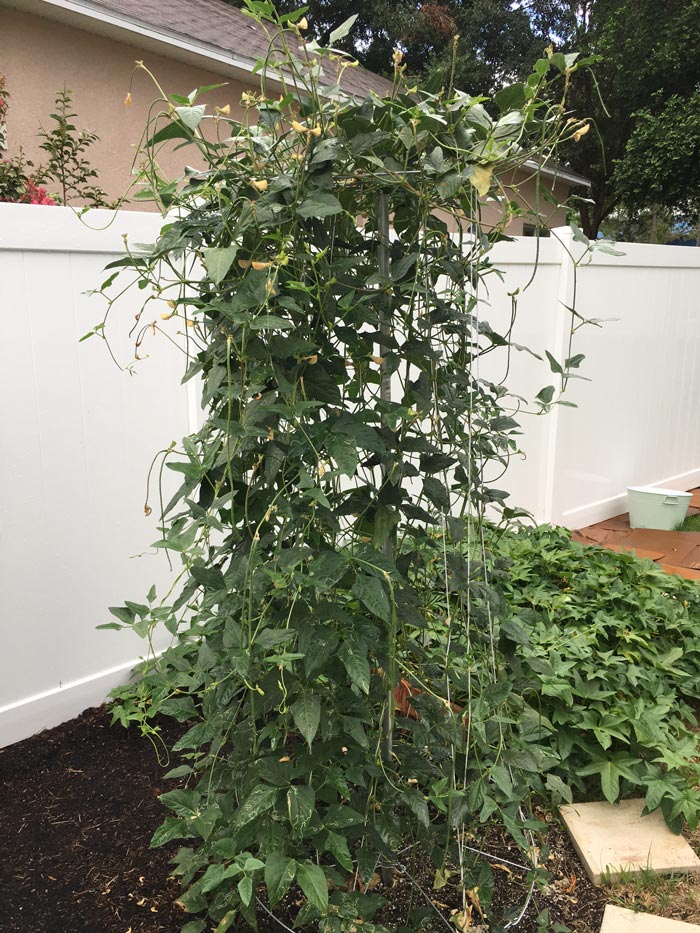
As she writes:
“And I thought you’d like to see this. Snake beans, per your advice! They’ve been GREAT!! And DELICIOUS!!
We’re sure getting a ton of beans!
Thank you so much for the recommendation!!”
I recommend this vigorous Southeast Asian green bean in my book Totally Crazy Easy Florida Gardening.
When you plant the right plants, you’re almost guaranteed a harvest. When you try to grow typical Yankee favorites like Beefsteak tomatoes, rhubarb and acorn squash… you’re not.
I spent a long, long time testing plants to make sure I gave good recommendations in my book. It’s a cheat-sheet to Florida gardening and it’s unlike any other Florida gardening book on the market. I know – I’ve read most of them!
The problem with these other Florida gardening books is that they all approach Florida as a problem. Sand, nematodes, heat… blah blah blah.
After pointing these things out, they then try to shoehorn a bunch of hard-to-grow crops into Florida’s unique growing environment and help you fight your way around and protect these carpetbagging vegetables from a climate to which they’re unsuited!
My approach was completely different.
I tested crops from climates that shared similarities with Florida. Southeast Asia, Africa, South America, the Mediterranean.
Then I further focused on the crops that produced…
The Most Food for the LEAST Amount of Work!
Things like this:
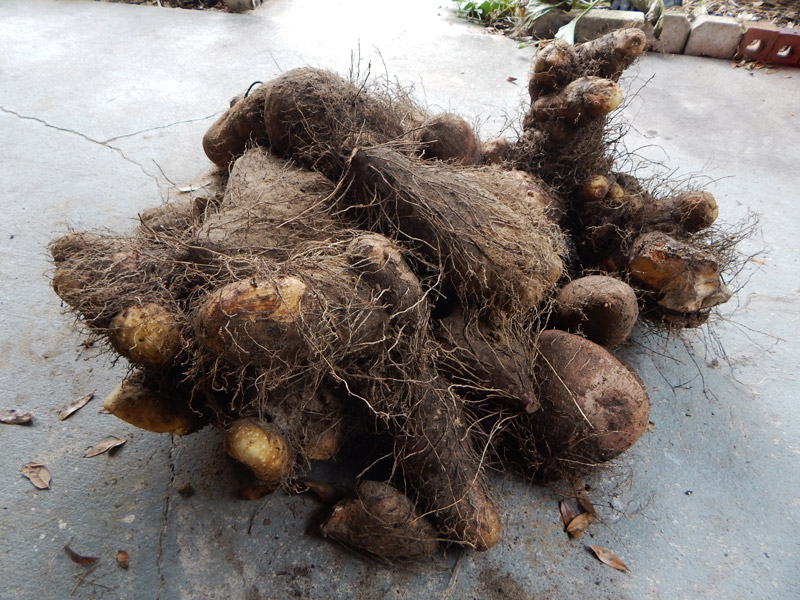
And this:
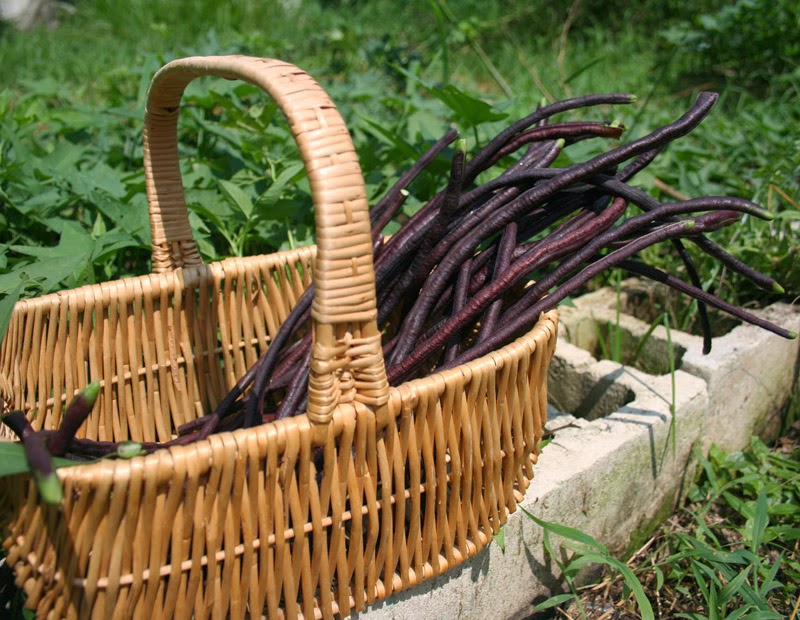
And this:
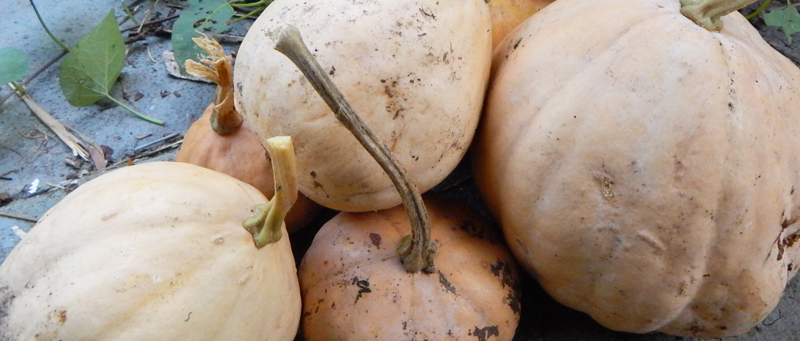
That’s the way to do it!
Quit Fighting
The average Florida gardener has often spent years struggling.
My goal was to end that struggle and help them literally grow tons of food… which is in my subtitle.
Totally Crazy Easy Florida Gardening consistently sells an average of 6-7 copies every day.
I’m thrilled to see it getting out there and had no idea what a hit it would be when I published it.
It keeps getting very nice reviews:
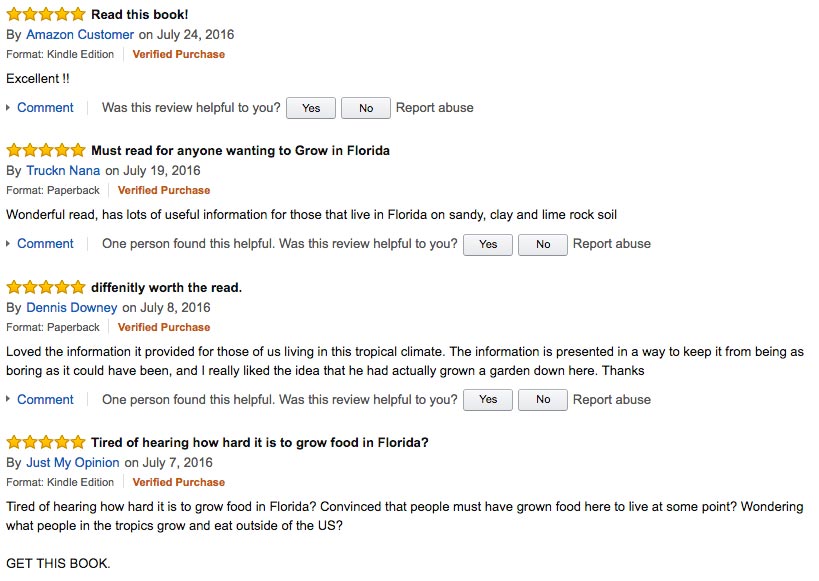 I spent years killing different types of vegetables so I could keep you from killing yours.
I spent years killing different types of vegetables so I could keep you from killing yours.
Learn to grow with Florida, instead of against her… and you’ll have success.
Get a copy here. It’s the best $11 you’ll ever spend on your Florida gardening.
Book sales will never make me rich, but the great reports coming in from successful gardeners who have read my book… priceless!
Thank you, Kerri.

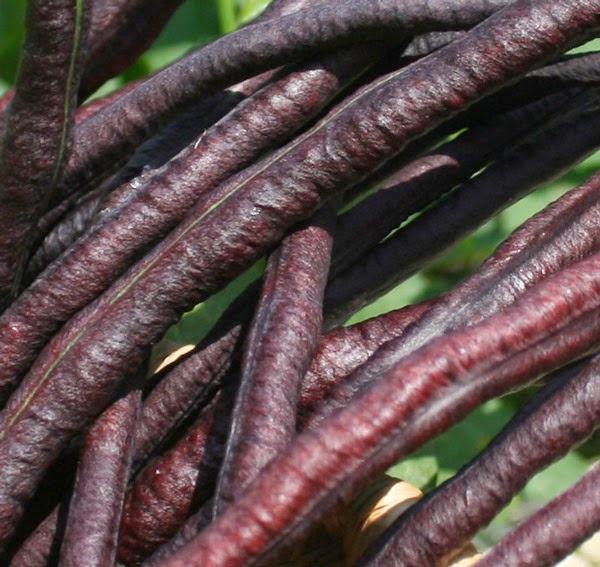
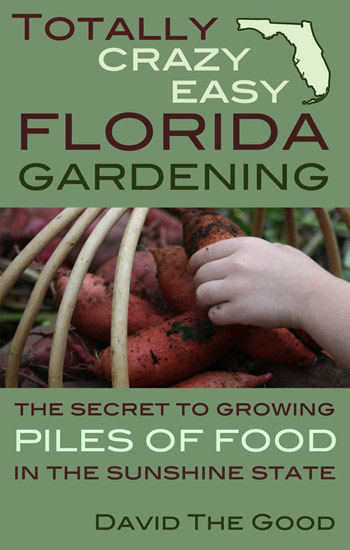
5 comments
First of all, thank you SO MUCH for the recommendation. We are getting SO many beans that each week we’re eating them fresh, giving a bunch to friends, and still having plenty to freeze!
I want to tell you two things: first, our lawn people accidentally cut one of my bean plants at the base when they were edging. I nearly died. Ha! I went out one morning and had an awful lot of brown leaves. On further inspection, I found the severed vine. I was extremely upset, but we’re still getting a ton of beans. (That’s why the beanpole looks a bit lopsided – one side is now a bit heavier.)
Secondly – and I find this to be hilarious – I was at my local nursery (a really good, huge, popular one) and I was asking a master gardener about some butterfly plants. I mentioned my beans, which I had recently planted, and he said it was way too late. Beans would absolutely NOT grow in the summer in Florida. I said, “Well, they’re already in the ground, so we’ll see.”
And there you have it. :D We’d never even heard of snake beans, but they are wonderful producers, apparently disease resistant, and the beans are just delicious. I did get some aphids, but I bought some ladybugs and put them on the plant, and I haven’t seen one aphid since then. That was at least a month ago.
Again, thank you so much for wonderful advice for Florida! Our gardening is different from the rest of the country, and as a beginner, I find it invaluable!
Are those the purple pod snake beans? Do they really turn green when cooked? I’m thinking about doing these next time because the green ones can be hard to see!
Yes, they are the purple pod snake beans. In my opinion, there are a bit tough and not quite as productive. However, they are certainly easier to find. I would like to try the red ones at some point too.
Thank you for the work you put in, for this website and your Youtube channel. So much information at my fingertips that when I am interested in learning how to do something; I just search for it on your sites. It took a while but I finally stopped doing random Internet searches because I kept getting sites that gave big box store advice and information that I could get from; well, a big box store if I felt like making the drive. Even my local celebrity master gardeners give the same cookie cutter advice that might work up North. It’s like reading one of those fancy subscription-based magazines, which are actually only good for composting and even that is debatable. It’s not all bad, though; I mean, if I want to know what is flowering they are on top of that but that’s about it.
Southwest Alabama (zone 8b) is different from your climate, true, but I have learned a ton of useful information from you that I rarely see from these other sources. For the rest, well, I have to pay attention to what works in my neck of the woods. I’m actually having fun and enjoying this gardening/food forest thing now. It’s a lot of work and setbacks or failures aren’t the end of the world anymore. I’m actually planning things out as well, for this year and the next. Will it work? Maybe, but I’ve learned about propagating, grafting and growing from seed now. So I’m saving money while I do this and eventually, I might actually make a bit of money to offset the cost a bit for future planting. I’ve even started my own nursery that I grew from seed and cuttings, that will be phase 2 of my food forest. Thanks again, David!
Thank you, William. There’s definitely some overlap with Alabama. I would love to live there at some point. I think success is a matter of problem solving and not getting kicked around by failures. You are on the right track.
Comments are closed.